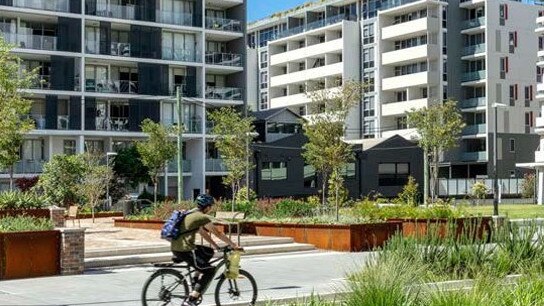Is the nuclear family disappearing? Social fabric critical in urban design
Social fabric is critical in urban design as we look to service some big demographic shifts.

What do you think of when you think of a family? Father, mother, two kids and a dog? A freestanding house in the suburbs with a trampoline in the backyard?
This may be an advertiser’s dream but it is less and less the reality. The proportion of Australian households in which people are living alone is fast catching up to the nuclear family.
Australian Institute of Family Studies researcher Lixia Qu has crunched Australian census data, finding big shifts since the mid-1990s. Qu’s analysis shows that in 1996 almost three in 10 households were couples with dependent children while a little more than one in five (22.5 per cent) was a single-person household. The gap is closing fast.
On the most recent numbers from 2021, couple families with dependent children now comprise 25.6 per cent of all households, almost on par with single-person households, which sit at 25.1 per cent. Households are defined as families and non-family household units (lone-person and group households).

The other big mover is couple-only households, which have risen from one in four in 1996 to 27.6 per cent in 2021. And for the first time there are more than a million one-parent families with dependent or non-dependent children across the nation, of which four out of five of the parents are women.
These may seem like small percentage shifts, but the trend line is clear. And they represent wide-ranging demographic change given there are about 9.25 million households in Australia.
“A well-known part of this story is the ageing of the population,” Qu says. “This will cause more single households among older cohorts as partners die, as well as more older couples living together with no children.

“The fertility rate has also fallen except for a short period of increase in the early to mid-2000s and is currently at its lowest point. This obviously has an effect, too.
“Another factor is the high numbers of separations, which go on to create two new single-person households.”
The changing nature of the typical Australian household has flow-on consequences across many sectors of the economy.
Where should health services and schools be located? How do we support the housing needs of single people? Should we be doing more, a new baby bonus perhaps, to encourage more people to have babies? What about childcare, urban planning, retirement and aged-care policy?
The National Housing Finance and Investment Corporation has projected a shortfall of more than 100,000 homes within the next five years, with consumer decisions to live alone playing a part in that, alongside increasing immigration.
So what could be done? We need to consider urban design that caters not only to nuclear family units, planning regulation to support more high-density single-person dwellings and better housing design.
Will we reach the point where Australia has more apartments like those in Manhattan that are built without kitchens?
Public policy also could focus on creating communities for people outside their families, especially older people.
It’s notable that older women predominate in sole-person households. An AIFS study found 55 per cent of Australians living on their own were women, and half of those women were aged 65 or older. About a third of men living on their own were 65-plus. That statistic alone should be on the radars of state and federal social policy ministers.
Australian Housing and Urban Research Institute managing director Michael Fotheringham says the rise in single-person households has been “a long-running trend but was definitely accelerated by Covid”.
“There is a clear need for more diverse housing settings to cater for smaller household sizes, including sole-person households,” Fotheringham says.
“I’m beginning to sense a falling away in local community resistance to higher-density housing options in many big city neighbourhoods as they accept that the cost of housing means there must be change, and the quality of design improves.”
But Fotheringham says given so many more people will be living solo, developers have some responsibility to think about the “social fabric”.
‘Will we reach the point where Australia has more apartments like those in Manhattan that are built without kitchens?’

“I keep thinking of those cul-de-sacs with a number of small properties that your gran may have lived in. Creating the foundations of a community is critical in urban design as we look to service these big demographic shifts.”
Is the changing nature of Australian families inevitable, and does it really matter?
Qu says the fertility story is important, given population growth is one of the drivers of the economy. The housing type data is also revealing greater numbers of young couples with no children.
“When we talk to couples about their choices to have a child, their thinking is pretty simple. ‘Can we afford it?’ they ask. That is a big question, with lots of tentacles. There is the cost of living, which in no small part includes the cost of housing. There is the cost of childcare. There is job security and job advancement.
“There are many pieces of the jigsaw when it comes to fertility, and government policy should be finely tuned to the needs of would-be parents,” Qu says.
Stephen Lunn is The Australian’s social affairs editor.




To join the conversation, please log in. Don't have an account? Register
Join the conversation, you are commenting as Logout